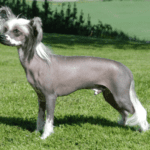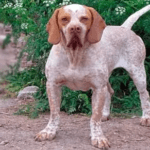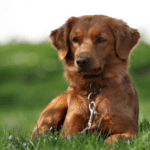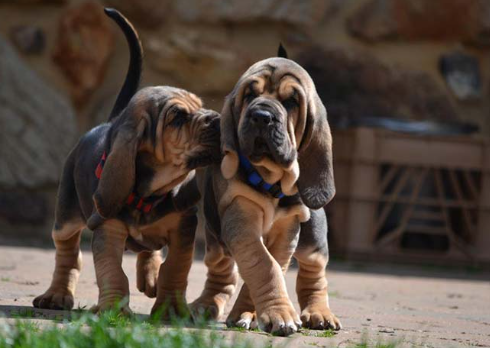Originally developed in the 19th century as a fighting dog and later adopted as a fashionable companion for gentlemen, the bull terrier has evolved into a family-friendly companion and show dog in contemporary times. Notably recognized by their distinctive long, egg-shaped heads, these dogs, though purebred, may sometimes find themselves in shelters or rescues, making adoption a compassionate choice for potential owners.
Contrary to their historical fighting image, bull terriers are affectionate and amiable, particularly towards all members of their household, including children. Their friendly nature and love for people make them crave companionship, discouraging extended periods of solitude. These dogs thrive when integrated into the daily activities of their human counterparts. Due to their high energy levels and intensity, regular exercise and engaging playtime are essential to keep them content.
Successful ownership involves firm and consistent training, an active lifestyle for the pup, and an abundance of love and attention. With these elements in place, a bull terrier has the potential to become a cherished new best friend.
For a good night’s sleep, consider providing your medium-sized bull terrier with a recommended dog bed from Dogtime. Additionally, enhance their grooming experience with a recommended dog brush and massager, specially designed for short-haired pups.
- Origin: England
- Year Recognized: 1885
- Bull Terrier Life Span: 10 to 15 years
Bull Terrier Size
Bull Terriers exhibit a diverse range of sizes, spanning from 35 to 75 pounds. Typically, males weigh between 55 to 65 pounds, while females range from 45 to 55 pounds. Their height at the shoulder averages around 21 to 22 inches.
In contrast, the miniature bull terrier is notably smaller, standing at 10 to 14 inches tall at the shoulder and weighing approximately 25 to 33 pounds.

Bull Terrier Breed Characteristics
| Adaptability: 4 Points | Dog Friendly: 2 Points | Shedding Level: 3 Points |
| Affection Level: 4 Points | Exercise Needs: 4 Points | Social Needs: 5 Points |
| Apartment Friendly: 3 Points | Grooming: 1 Point | Stranger Friendly: 5 Points |
| Barking Tendencies: 4 Points | Health Issues: 5 Points | Territorial: 5 Points |
| Cat Friendly: 2 Points | Intelligence: 4 Points | Trainability: 2 Points |
| Child Friendly: 3 Points | Playfulness: 5 Points | Watchdog Ability: 5 Points |
Bull Terrier Breed Colours:
- Black Brindle & White
- Black Tan & White
- Brindle
- Brindle & White
- Red
- Red&White
- White
- White&Brindle
- White&Red
- White Black&Tan
- Black Brindle
- White&Black Brindle
History
During the early 19th century, breeds known as “bull and terrier” were developed to address the demands of pest control and engage in animal-based blood sports. The Bull and Terrier breed originated from a combination of the now-extinct Old English Bulldog and Old English Terriers, possibly incorporating other terrier varieties.
This novel breed blended the swiftness and agility of lightly built terriers with the resilience of the bulldog, which, while adept in fighting bulls and bears in confined spaces, struggled in more diverse combat situations.
Numerous breeders started crossbreeding bulldogs with terriers, contending that such a mix enhanced the fighting qualities of the resulting dogs. However, despite the perceived value of this bulldog-terrier cross, little effort was made to preserve the breed in its original state. The absence of standardized breeding practices, focusing more on appearance than specific traits, led to the eventual divergence of the “Bull and Terrier” into precursors of “Bull Terriers” and “Staffordshire Bull Terriers”—smaller and more manageable than their ancestors.
In the mid-19th century, James Hincks initiated breeding programs involving bulls, terriers, and “English White Terriers” in pursuit of a refined aesthetic, aiming for dogs with cleaner appearances, improved legs, and enhanced heads.
1862 Dog show
In 1862, Hincks participated in a dog show at Cremorne Gardens in Chelsea, London, showcasing a bull terrier named “Madman,” sired by his white bulldog and with a dam named “Puss.” At this point, these dogs didn’t yet exhibit the distinctive “egg face” seen today but featured a stop in the skull’s profile. “Madman” quickly gained popularity and was further refined through breeding with Dalmatians, Spanish Pointers, and Whippets to enhance grace and agility. Simultaneously, efforts were made to diminish stops inherited from Borzoi and Rough Collies.
Hincks aimed for a distinctively white coat in his dogs and actively bred for this trait. The inaugural modern bull terrier, later recognized as “Lord Gladiator” starting from 1917, marked a departure from the traditional halter.
Acknowledging health issues linked to breeding solely for a white coat, Ted Lyon introduced color by incorporating Staffordshire bull terriers in the early 20th century. The recognition of colored bull terriers as a distinct breed occurred in 1936. While brindle is the preferred color, other variations are also welcomed.
Appearance
The Bull Terrier’s most distinctive feature is its head, characterized as having an ‘egg-shaped head’ when viewed from the front, with the top of the skull nearly flat. The profile gently slopes downward from the skull’s apex to the tip of the nose, which is black and exhibits a well-developed, downward-curved nostril. The lower jaw is notably deep and robust, and the eyes, a unique triangular shape, are small, dark, and set deep into the skull.
Triangular eyes are exclusive to Bull Terriers. The body is robust and rounded, emphasizing strong, muscular shoulders. The horizontally carried tail may be white, red, fawn, black, brindle, or a blend of these colors.

Personality
Never one to lag behind, the Bull Terrier is a sociable and inquisitive extrovert always ready for a good time and delighted to greet you. It’s unusual for a Bull Terrier to be timid or avoidant of people.
Both Bull Terriers and Mini Bull Terriers are characterized as brave and spirited. While these are positive traits, allowing a Bull Terrier to develop possessiveness or jealousy can lead to less desirable behavior.
Without early training and exposure to various animals, they may display potential aggression toward other creatures. However, in interactions with people, they typically exhibit a friendly disposition. On the flip side, they may have tendencies like chewing, barking, and chasing tails, and housetraining can pose challenges.
Temperament
Due to their independent and stubborn nature, Bull Terriers may not be considered suitable for novice dog owners. Despite their stubbornness, they possess an even temperament and can be disciplined. The Bull Terrier Club characterizes the breed as particularly good with people.
Early socialization is crucial to ensure compatibility with other dogs and animals. Their personality is often described as courageous, and spirited, with a playful demeanor, a fondness for children, and suitability as a great family member. Although specific legislation has targeted the breed,
A 2008 study in Germany found no significant differences in temperament between bull terriers and golden retrievers in overall temperament surveys.
Health
Recommended health tests from the AKC:
- Patella Evaluation
- Cardiac examination
- BAER test
- Kidney-urine analysis
Those considering becoming owners of potential sire and dam dogs are required to provide evidence of testing for kidney and heart issues. Additionally, foals must undergo hearing tests before departing from the breeder. Committed breeders maintain ongoing communication and collaboration to preserve the breed’s health and its finest characteristics. Bull terriers obtained from reputable breeders who prioritize health testing typically develop into healthy, content family members.
Care
A bull terrier requires someone to be present at home during the day. Leaving a bull terrier to entertain itself is akin to leaving a creative and intelligent child unsupervised in a room filled with explosives. One significant concern is their tendency to ingest almost anything, leading to potential gastrointestinal obstructions that may go unnoticed until it becomes critical. Particularly, raw toys can pose significant risks. It’s imperative to bull terrier-proof your home!
Meeting the physical and mental needs of a bull terrier involves dedicating half an hour to an hour of daily exercise. Activities such as walks, ball chasing, and engaging with interactive toys provide outlets for their energy and intellect. Bull terriers can also participate in agility and obedience tests.
When taking him for a walk, always ensure he is on a leash to prevent him from chasing other animals or wandering off independently.
Bull Terrier Puppy
Bull terrier puppies are full of energy and curiosity, exploring everything around them. However, it’s crucial to be mindful of high-impact activities that can harm developing bones. Until your puppy reaches full maturity at 12 to 18 months, avoid bone-stressing activities like jumping on furniture, playing Frisbee on slick surfaces, or excessive running on hard floors. These activities can strain or injure the still-developing joints and ligaments.
Consistent and ongoing training is vital. Leadership should be asserted without resorting to physical force or harsh words. While Bull Terriers can be challenging to train, employing positive reinforcement techniques and maintaining firm consistency in expectations tends to yield the best results.
Housetraining Bull Terriers can pose difficulties, and a closely followed program, particularly utilizing the crate method, is highly recommended. A crate not only aids in housetraining but also prevents destructive behavior and keeps the bull terrier out of trouble.
Bull terriers may exhibit suspicion towards strangers and show potential aggression towards other animals and people. Early exposure to puppy socialization classes and dog-friendly environments is essential for acclimating them to diverse situations, people, and other dogs. Additionally, training them to welcome visitors to your home is crucial.
Grooming
Maintaining a well-groomed Bull Terrier is straightforward. Despite the breed’s natural cleanliness and minimal dog odor, a gentle shampoo bath every three months is advisable. Brush their sleek coat once a week using a natural bristle brush or rubber hound mitt, and enhance shine with a coat conditioner/polish.
Weekly ear checks are essential, cleaning if necessary, and toenails should be trimmed monthly. Keep teeth and gums healthy and breath fresh by engaging in regular tooth brushing with a soft toothbrush and doggy toothpaste.
To foster a positive grooming experience, introduce grooming practices to the Bull Terrier at a young age, ensuring they learn to handle and accept fuss patiently.
Exercise

Daily, moderate exercise is highly beneficial for Bull Terriers, offering both mental and physical stimulation. A leisurely, extended walk with the family is ideal. Originally developed for sport and as a gentleman’s companion, this breed boasts remarkable strength and agility. Engaging in canine sports, including obedience, tracking, agility, and coursing ability tests, serves as an enjoyable avenue to channel the Bull Terrier’s energy effectively.
Training
Owners should be mindful that the Bull Terrier embodies the tenacity and courage of a bulldog while belonging to the terrier group. As an independent free-thinker, this breed prioritizes “fun and games” over a strong work ethic. Bull Terriers operate on the principle that if an activity is enjoyable, they will willingly participate; otherwise, it may not capture their interest. Therefore, making training an enjoyable experience is key, leading them to excel.
Initiating training with positive reinforcement, using food or toys, serves as an excellent starting point. Bull Terriers demonstrate proficiency in various dog sports and can be adept in roles such as bomb detection, search-and-rescue, service, assistance, health alert, and even as therapy dogs. With positive training methods, patience, and a touch of humor, there’s virtually no limit to what Bull Terriers can achieve.
Feeding
The amount of food your adult dog requires depends on factors such as size, age, build, metabolism, and activity level. Dogs, like people, are individuals and do not have identical nutritional needs. It’s evident that a highly active dog will necessitate more food than a less active counterpart.
The quality of the dog food also plays a significant role—premium dog food contributes more to your dog’s nutrition, meaning you may need to adjust the serving size accordingly.
Maintain your bull terrier’s optimal condition by measuring their food and providing two meals a day. If unsure about their weight, conduct a visual and tactile assessment. Observe the dog from below to identify a visible waist. Then, place your hands on their back, thumbs along the spine, and fingers spread downward.
You should be able to feel, but not see, their ribs without applying excessive pressure. If you can’t feel them easily, your dog may require less food and more exercise.
National Breed Club & Rescue, Adoption || bull terrier puppies for sale
Bull Terrier Pups For Sale
BULL TERRIER BREED REVIEW
More Dog Breeds For Further Research
FAQs
Bull Terrier Price?
Bull terriers are about average when it comes to price. A puppy from a breeder can cost anywhere from $800 to $2,000. It depends on the breeder you buy from and the puppy itself. Dogs with champion bloodlines will cost more.
What are the pros and cons of Bull terriers?
| Pros: An easy grooming routine This dog has a coat of flat, short hair that requires weekly brushing. | Cons: Not good with children Unless it is socialized to deal with children, this breed is not a good choice for a family with small kids. |
Is a bull terrier a pit bull?
There are several key differences between Bull Terriers and Pitbulls. The average Bull Terrier is smaller in both height and weight compared to the average Pitbull. Additionally, the bull terrier has a very attractive and memorable face and nose, while the pit bull has a more uniform face like other dogs.
Is an American Pitbull the same as a pit bull?
Pitbull is a description of a type of dog, but American Pit Bull Terriers are a breed. Other breeds that properly fall under the term “pit bull” include the American Staffordshire Terrier, American Bulldog, and Staffordshire Bull Terrier.












Top site ,.. amazaing post ! Just keep the work on !